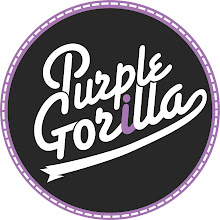I’ll be using Johnny Cupcakes as an example on how the fashion industry could be affected negatively.
Overall External Sensitivity Risk Score is determined by identifying the most significant external factors and weighting them to represent how significant each sensitivity is to the performance of the industry. Examples of external sensitivities that could effect the fashion industry are exchange rates, interest rates, commodity prices and government regulations. (Fashion design Services in the US – Industry Risk Taking Report, 2009, paragraph 8)
An external factor that will affect Johnny Cupcakes is Seasonal Trends. The company experiences some seasonal trends in the sale of its products. For example, sales in the American region are often stronger than the European region. Social and cultural elements are strong contributing factors.
Another factor will be Inventory Management/Supplies/Materials. The Company's ability to manage its inventory has been enhanced by favorable supply conditions in the industry. The Company's manufacturing process requires a high volume of quality components that are procured from third party suppliers. Reliance on suppliers, as well as industry supply conditions, generally involves several risks, including the possibility of defective parts, shortage of components and reduced control over delivery schedules and increases in component costs.
And the last one, Technological Changes And Product Transitions. The shirt industry is characterized by continuing improvements in fashion and design, which result in frequent introduction of new products, short product life cycles, and continual improvement in product price/design characteristics. Johnny Cupcakes must effectively manage a product transition and incorporate technology that will improve customer service and demand.
Especially in the fashion industry, drugs have always been a big factor with models and just with the industry in general. This generates negativity towards the industry but for the past few years the industry have been fighting against it by promoting a drug free environment. More recent the industry became more involved with global warming. Most fashion shows have been promoting Al Gore’s “The Climate Project”. (Mixing fashion with social responsibility, 2007, paragraph 2)
As for Johnny Cupcakes, since the beginning when he started his company, he promotes a drug, alcohol and smoke free environment. He clearly states on his entire blog and life story how he votes against it and spreads the word through his company. (Johnny Cupcake Story, 2008, paragraph 1)
References:
IBISWORLD. (2009). Fashion Design Services in the US - Industry Risk Rating Report. Retrieved September 7th, 2011, from Mindbranch. Website: http://www.mindbranch.com/Fashion-Design-Services-R538-26221/
Earle, J. (2008). Johnny Cupcakes Story. Retrieved September 7th, 2011, from The Story. Website: http://www.johnnycupcakes.com/the_story/
Morra, B. (2007). Mixing fashion with social responsibility. Retrieved September 7th, 2011 from The Star. Website: http://www.thestar.com/article/179291




